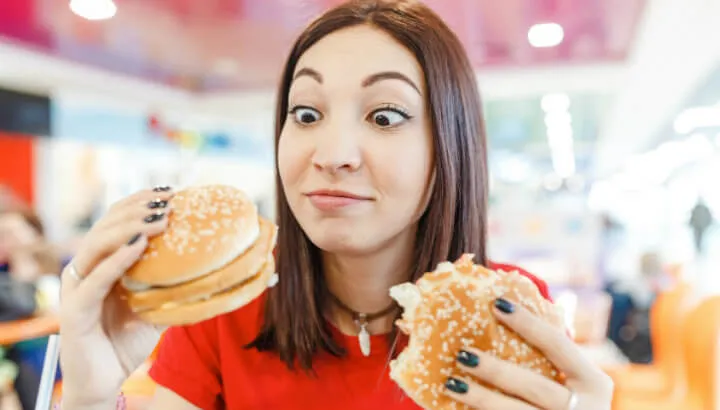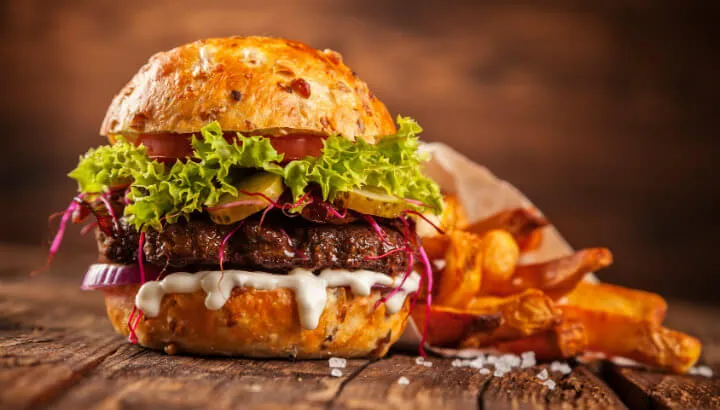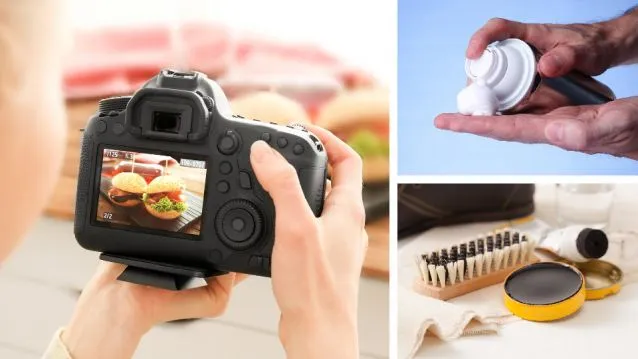Why is it that fast food always looks so darn mouthwatering in advertisements, yet, in real life, not so appealing? Well, there’s a good reason for that. Advertisers want their product to catch your eye and open your wallet. So, photographers will stop at nothing to make the product look irresistible to consumers.
And in the case of fast food that means using non-edible items to make a “ho-hum” burger look like a meal fit for a king. Unfortunately, what you see is not always what you get.
We eat with our eyes first

No matter how you paint it, the job of the fast food advertiser is to gently, or not so gently, manipulate you into believing that what they’re selling is what you want. And what better way to do that than by teasing your sense of sight. It’s no secret that we eat with our eyes first.
The food industry spends billions of dollars each year on marketing ploys to make you believe that you’re getting healthy food when, in reality, you’re often not. One way is by dressing it up to make it appear fresh. When in reality, it’s probably not the best food choice for your health. But today’s millennials are known as the “visual generation.” So, thanks to social media, food images often speak louder than words.
When your mouth waters each time you see a fast food poster or magazine ad, realize it’s not that you’re hankering for a greasy burger. Rather, the food has been manipulated to appeal to your sense of sight. Yes, for the sake of the almighty dollar, you’re being duped.

How about a little shoe polish on your burger?
Those tantalizing grill marks you see advertised have likely been strategically placed with a branding iron or even eye-liner. The fact is most photographed meat products aren’t cooked because they wither. Instead, shoe polish or varnish is added to create a delicious gleam to raw meat. Yeah, it’s pretty doubtful you’ll see charbroil grill marks and a juicy sheen on your “real life” fast food burger.
Here’s some deodorant for your garnish
Those juicy tomatoes and crisp lettuce you’re seeing in ads are likely veggies sprayed with deodorant to create a high gloss effect. And a little glycerin goes a long way to add moisture droplets on lettuce and garnishes.
A dollop of shaving cream on that milkshake?
When it comes to creating the perfect milkshake photo, you’ll often see a generous topping of whipped cream. But the truth is whipping cream collapses. Instead, food stylists often use shaving cream to garnish those shakes. Oh yes, and that tantalizing ice-cream, well, that’s really tinted mashed potatoes. It holds up much better than ice cream under hot lights.
Hot and fresh equals…cotton balls?
Nothing says a food is fresher than the image of hot steam, billowing from a bun, burger or fries. Most food doesn’t have a high water content so any steam would dissipate pretty fast. In addition, there’s simply not enough time to continually make fresh food. That’s where cotton balls come in to play.
Cotton balls soaked in water and then microwaved produce enough steam for several minutes. They are then strategically placed behind foods and beverages to give the impression they’re steaming hot and fresh. When was the last time you unwrapped a burger to find it steaming?
Behind the camera with McDonald’s
To answer the question: “Why does your food look different in the advertising than what is in the store?” Hope Bagozzi, McDonald’s Canada’s director of marketing takes us behind the scene to a photo shoot. Tricks of the trade can make that advertised burger look very different from the one you purchased through the drive-thru.
“You can definitely see that there’s a size difference,” said Bagozzi. “The box that our sandwiches come in keep the sandwiches warm, which creates a bit of a steam effect, and it does make the bun contract a little bit.”
She goes on to say, “The main difference is that we actually took all the ingredients that are normally hidden under the bun, and we pulled them to the foreground so that you can see them.”
A food stylist’s job is to create a photographed product that will entice viewers. In the case of McDonald’s, this meant airbrushing and enhancing colors on the burger to make it more visually appealing and fresh looking.
Look, of course, advertisers want to make their products look as appealing as possible. But, when what you get is drastically different than what was advertised, then it’s hard not to feel duped by marketing hype. Here’s a thought, how about giving us what we pay for? Fresh food that actually looks and tastes like wholesome fresh food!
The bottom line: Realize that these ads overpromise and underdeliver. The next time you pass a billboard that makes your mouth water, remember it’s probably just the hairspray, glycerin and shoe polish making you drool.
FREE BOOK: Discover how to grow life-saving foods at home with little effort =>
— Katherine Marko

